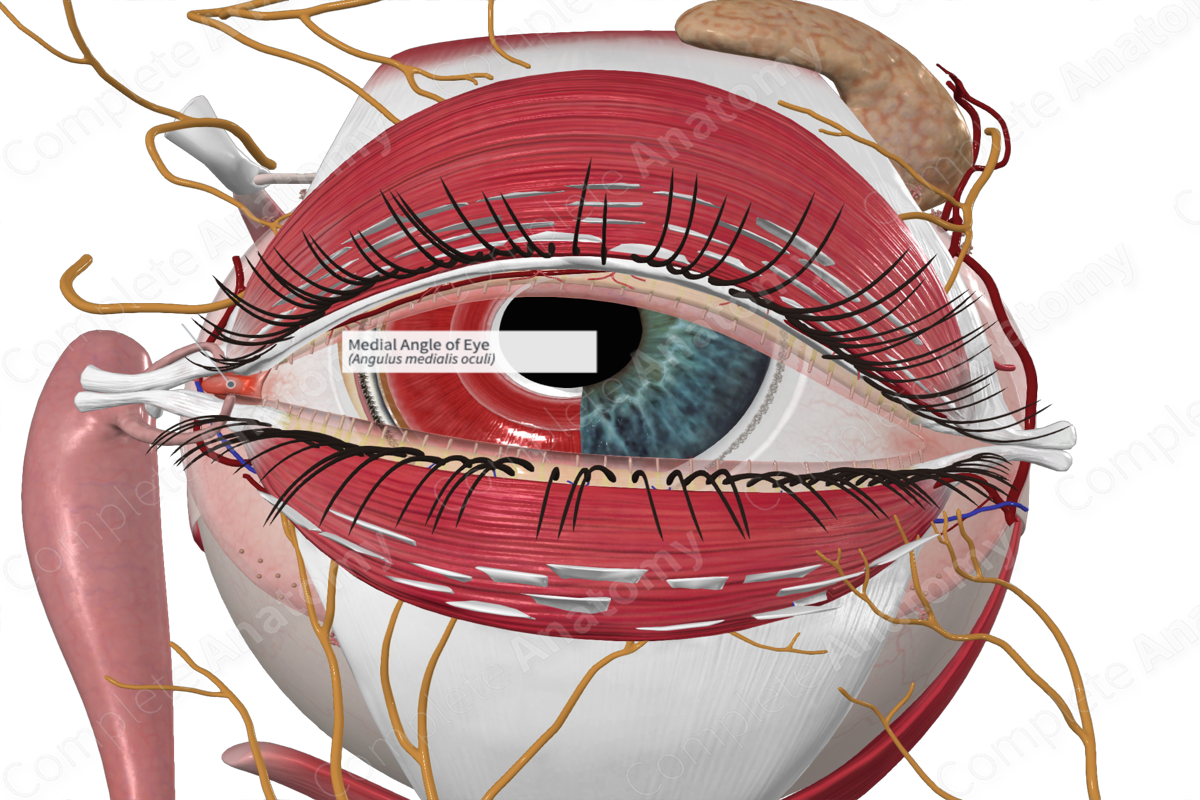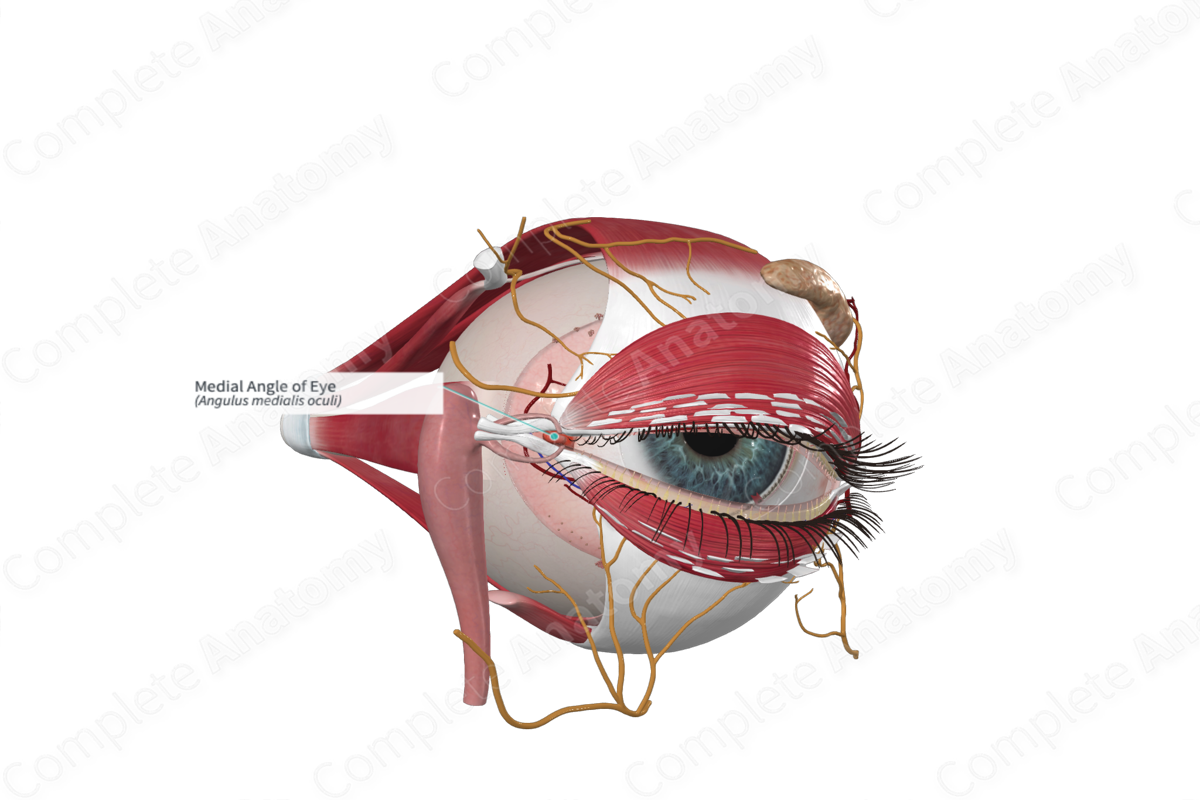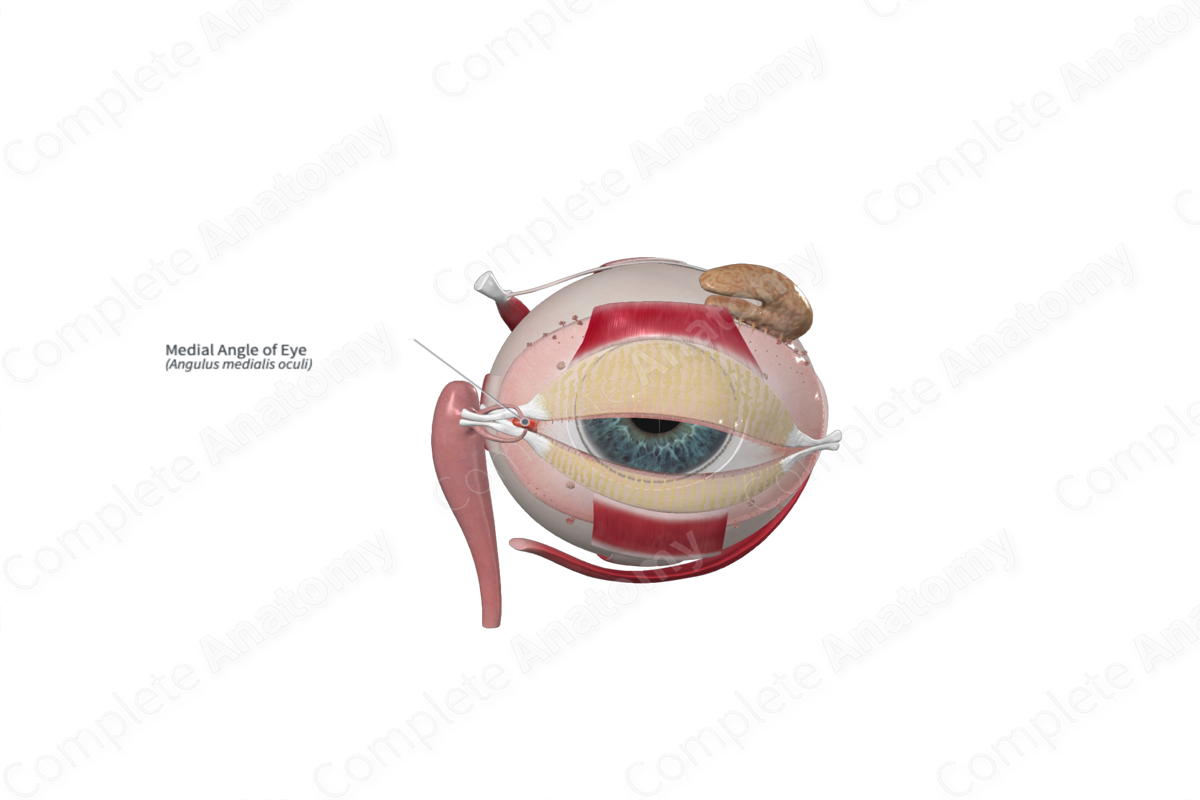
Quick Facts
The medial angle of eye is the angle formed by the medial junction of the superior and inferior eyelids (Dorland, 2011).
Related parts of the anatomy
Structure and/or Key Feature(s)
The medial angle of the eye, or medial canthus, is the point where the medial edges of the eyelids meet, thus, the point where the inner part of the palpebral fissure ends. The shape of the medial angle of the eye can vary between different geographic and ethnic populations. In Caucasians, the medial angle of the eye is completely exposed, while in Asians, the medial canthus is covered by a semilunar fold of skin called the epicanthus.
Anatomical Relations
The medial canthus is separated from the eyeball by the lacrimal lake (lacus lacrimalis), a small, usually tear filled, triangular space. Within the space is a small tissue body called the lacrimal caruncle. The lacrimal caruncle is modified skin containing fine hairs. Slightly lateral to the medial canthus, along the margins of the superior and inferior eyelids, is a small elevation, the lacrimal papilla. It contains a small opening, the lacrimal punctum, that is the opening into the lacrimal drainage system allowing for removal of tears from the eye.
Function
The medial angle of the eye provides a rounded space for the lacrimal lake.
List of Clinical Correlates
- Canthotomy
References
Dorland, W. (2011) Dorland's Illustrated Medical Dictionary. 32nd edn. Philadelphia, USA: Elsevier Saunders.



